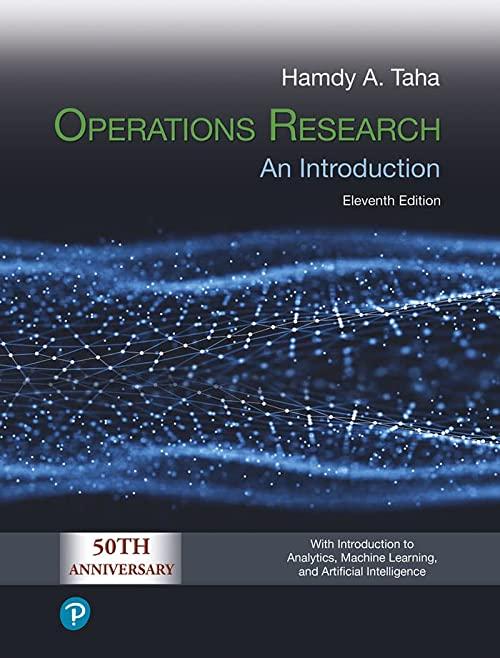The use of price differentiation to increase revenue in airlines need not be limited to two-segmentation fare
Question:
The use of price differentiation to increase revenue in airlines need not be limited to two-segmentation fare classes only (as evident by the seemingly run-out-of-alphabet letters used presently by airlines).
(a) Segment the optimum number of seats (= 125 ) in Example 14.2-2 to three fares with seat segmentations set at 1-60, 61-80, 81-125.
(b) Comment of the revenues compute in (a) relative to the optimum single fare (125, $500).
Example 14.2-2
The dashed lines in Figure 14.2 graph the optimum solution obtained in Example 14.2-1 for the (Q-P) demand curve Q = 250 − 25P. It shows that selling 125 seats at the single price of $500 each will yield a revenue of 125 × $500 = $62,500. However, an examination of the figure indicates that the top triangle adjoining the horizontal dashed line is a more profitable area that can be exploited to cater to customers willing to pay more than $500 per ticket (in return for added perks and conveniences). For example, the 125 seats can be segmented into two fares: Fare 1 is allotted 50 seats at $800 each with fare 2 assigned the remaining 75 seats at $500 each. The new higher revenue is $800 × 50 + $500 × 75 = $77,500.
To ensure that seats are not sold disproportionately at the lowest fare (defeating the purpose of why two prices were set up in the first place), a protection level specifying the number of seats assigned to higher-price tickets is set in advance. In the present example, the protection level for fare 1 ticket (priced at $800) is estimated at 50 seats—meaning, fare 2 ($500) customers cannot purchase any of 50 seats assigned to fare 1.
Step by Step Answer:






